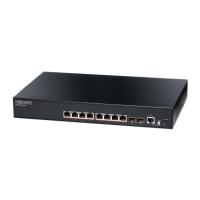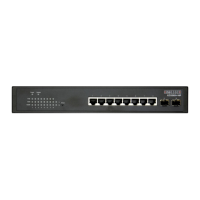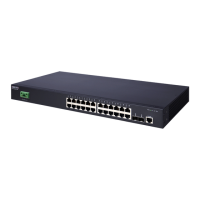Chapter 22
| Quality of Service Commands
– 538 –
Command Usage
◆
Use the
policy-map
command to specify the name of the policy map, and then
use the class command to configure policies for traffic that matches the criteria
defined in a class map.
◆
A policy map can contain multiple class statements that can be applied to the
same interface with the service-policy command.
◆
Create a Class Map (page 537) before assigning it to a Policy Map.
Example
This example creates a policy called “rd-policy,” uses the class command to specify
the previously defined “rd-class,” uses the
set
command to classify the service that
incoming packets will receive.
Console(config)#policy-map rd-policy
Console(config-pmap)#class rd-class
Console(config-pmap-c)#set cos 0
Console(config-pmap-c)#
class
This command defines a traffic classification upon which a policy can act, and
enters Policy Map Class configuration mode. Use the
no
form to delete a class map.
Syntax
[
no
]
class
class-map-name
class-map-name - Name of the class map. (Range: 1-32 characters)
Default Setting
None
Command Mode
Policy Map Configuration
Command Usage
◆
Use the policy-map command to specify a policy map and enter Policy Map
configuration mode. Then use the
class
command to enter Policy Map Class
configuration mode. And finally, use the
set
command and one of the
police
commands to specify the match criteria, where the:
■
set cos command sets the class of service value in matching packets.
(This modifies packet priority in the VLAN tag.)
■
police
commands define parameters such as the maximum throughput,
burst rate, and response to non-conforming traffic.
◆
Up to 16 classes can be included in a policy map.
